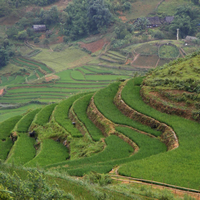Food prices in Asia continue to be above what they were prior to the 2007-2008 surge. Worse, there are signs that they may increase once again owing to the existence of similar conditions, such as excess demand and rising input prices due to the increasing cost of oil. Presently, rising food prices are leading to the region's major economies re-orienting their food management policies -- a step that is likely to be the harbinger of a tougher stance by the region on the Doha Round of trade talks as well as on climate change issues.
The major rice-exporting countries of the region -- India and China -- responded in 2007-2008 by placing export restrictions on rice and other crops, which continue to be in place even as food prices show worrisome increases in both nations yet again. The restrictions were matched by other rice-exporters, such as Vietnam and Cambodia. On the other end of the spectrum, Indonesia -- a major food-importer -- has increased food subsidies by $280 million in the last year. South Asian countries like Pakistan and Bangladesh are resurrecting rationing systems and selling wheat and rice at subsidized prices in urban areas.
While proponents of liberalized trade typically criticize such moves for making a bad situation worse through a cascading effect, such decisions nevertheless reveal that countries in the region give more weight to the concerns of net food consumers, who suffer most from price increases. Asian countries consist of more net food consumers than net food producers (though this is disputed by some studies), and the ranks of the former continue to swell, due to growing urbanization and industrialization. In fact, in February 2008, the World Food Program (WFP) reported seeing "the emergence of a 'new area of hunger' in developing countries where even middle-class, urban people are being 'priced out of the food market' because of rising food prices."

